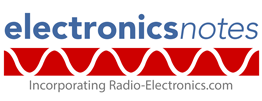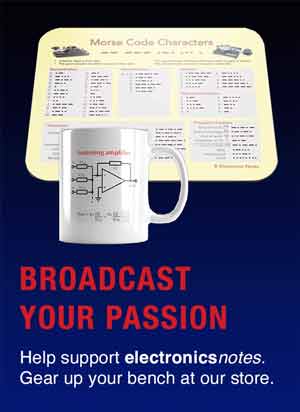Fast Recovery Diodes Explained
Fast recovery diodes are used in many areas of electronics that require high reverse voltages while also needing very fast switching - these diodes use a form of PN diode structure modified to give te fast switching needed.
Home » Electronic components » this page
Diode Tutorial Includes:
Diode types
Diode specs & ratings
PN junction diode
Fast recovery diode
LED
PIN diode
Schottky barrier diode
SiC diode
Solar cell / photovoltaic diode
Varactor / varicap
Zener diode
Diode component data:
PN junction diode data
Schottky diode data
Silicon carbide, SiC Schottky diode data
Fast recovery diodes may not be mentioned as much as many other forms of diode, but they are extensively used where high speed switching is required.
Not only do these diodes provide a high speed switching, but they can also provide the same level of reverse voltage capability of standard PN junction diodes.
The combination of fast switching and reverse voltage capability opens them up to use in many power applications.
Basic concept
A fast recovery diode is a specialised form of PN junction diode that uses a particular diode structure to achieve its rapid switching speed.
Unlike Schottky diodes, which rely on a metal-semiconductor junction, the core technology for a fast recovery diode involves carefully controlling the lifetime of minority carriers.
The technology uses heavy metal doping, typically with a trace amount of gold or platinum, which are intentionally added to the silicon wafer during the fabrication process.
These heavy metal atoms act as recombination centers in the crystal lattice.
When the diode is forward-biased, charge carriers (electrons and holes) are injected into the junction. When the voltage reverses, the diode must "recover" by allowing these stored charge carriers to recombine or be swept away.
The recombination centres created by the gold or platinum doping significantly accelerate this process, allowing the excess charge to disappear much faster than in a standard PN diode.
This accelerated recombination is what gives the diode its short reverse recovery time (trr) and fast switching capability.
Understanding the Diode's "Recovery"
To understand the importance of a fast recovery diode, it is fist necessary to look at the behaviour of a PN junction diode when it switches from the conducting state to the blocking state.
A diode is not an ideal one-way valve for current; it has a characteristic known as reverse recovery time which is often denoted by the letters trr.
When a diode is forward-biased, charge carriers i.e. the electrons or holes are injected into its depletion region, effectively storing charge.
When the voltage across the diode is instantly reversed, this stored charge doesn't disappear immediately. Instead, a significant reverse current, known as the **reverse recovery current Irr, flows for a brief period as the stored carriers are swept out of the depletion region.

The reverse recovery time is the duration it takes for this reverse current to drop to a negligible value.
In low-frequency circuits, this short delay is of little consequence. The time between voltage reversals is long enough for the diode to fully recover.
However, in high-frequency circuits, where the switching cycles are measured in microseconds or even nanoseconds, this delay becomes a major problem. During the brief moment the diode is still conducting in the reverse direction, it creates a short circuit and dissipates a significant amount of power, leading to wasted energy, increased heat generation, and potential damage to the circuit.
Minority carrier fifetime control
The key to creating a fast recovery diode lies in minimizing the reverse recovery time. This is achieved by intentionally shortening the minority carrier lifetime within the diode's P-N junction.
Minority carrier lifetime refers to the average time a minority charge carrier exists before it recombines with a majority carrier.
The faster this recombination occurs, the quicker the stored charge dissipates, leading to a shorter recovery time.
Two primary techniques are used to achieve this:
Gold or Platinum Doping: This is a classic method that has been used for decades. Trace amounts of heavy metals like gold or platinum are introduced into the silicon wafer during the fabrication process. These atoms act as **recombination centers** in the crystal lattice. They provide a "trap" for the excess minority carriers, significantly accelerating their recombination and, consequently, reducing the reverse recovery time. This method is effective but can slightly increase the diode's forward voltage drop.
Irradiation: More modern techniques involve bombarding the silicon with high-energy particles, such as electrons or protons. This process creates crystal defects that act as recombination centers, achieving the same result as heavy metal doping but with a more precise level of control over the minority carrier lifetime. This technique is more sophisticated and is used in the manufacturing of ultra-fast recovery diodes.
Fast recovery diodes characteristics
Fast recovery diodes are designed for a specific purpose, and their characteristics reflect this specialisation, and sometimes other characteristics are less optimised:
Short Reverse Recovery Time (trr): This is their defining feature. Typical values for fast recovery diodes are in the range of 100 to 500 nanoseconds (ns). For ultra-fast recovery diodes, this value can be less than 50 ns. This is a dramatic improvement over standard rectifiers, which can have recovery times in the microsecond range.
Forward Voltage Drop (VF): Compared to standard rectifiers, fast recovery diodes often have a slightly higher forward voltage drop. This is a direct consequence of the doping or irradiation process used to create the recombination centers, which slightly reduces the overall conductivity of the silicon. However, the power saved from the reduced switching losses more than compensates for this small increase in conduction loss.
High Reverse Voltage Rating (VRRM): Fast recovery diodes are designed to handle high reverse voltages, often in the range of hundreds or even thousands of volts. This is a critical requirement for their use in power supply circuits and motor drives.
Operating Frequency: The short trr allows them to operate effectively at high switching frequencies, typically ranging from tens of kilohertz (kHz) to several hundred kHz, and even into the megahertz (MHz) range for ultra-fast versions.

Comparing fast recovery diodes vs other diodes
To fully understand the place of the fast recovery diode, it's useful to compare it with other common diode types.
Let's take the example of a typical rectifier diode like a 1N400x. The primary difference is speed. A standard rectifier like a 1N4001 is designed for 50/60 Hz line frequency rectification, where the reverse recovery time is not important.
It has a significantly longer recovery time but a slightly lower forward voltage drop.
The fast recovery diode sacrifices the forward conduction efficiency for a massive improvement in switching speed, making it suitable for high-frequency applications.
It is possible to copare a fast recovery diode and a Schottky diode:
| Fast Recovery Diode vs. Schottky Diode |
||
|---|---|---|
| Feature | Fast Recovery Diode | Schottky Diode |
| Recovery Time | Very short (t |
Effectively instantaneous |
| Forward Voltage | Moderate (VF approx 0.7 - 1.2V) | Very Low (VF approx 0.2 - 0.5V |
| Reverse voltage capability | High (up to kV and more) | Low (max 100V or so) |
| Leakage Current | Very Low (nA range) | Very High (µA to mA range) |
| Technology | Doped PN Junction | Metal-Semiconductor Junction |
| Typical Use | High-voltage, high-power switching; output rectification in SMPS | Low-voltage, high-frequency switching; logic circuits, clamping |
Applications in modern electronics
Fast recovery diodes use their ability to handle rapid switching cycles with minimal loss and this is critical to the efficiency and reliability of these devices.
witching-Mode Power Supplies (SMPS): This is arguably the most common application. SMPS circuits use high-frequency switching to efficiently convert AC to DC power. Fast recovery diodes are essential for the output rectification stage, where they must switch rapidly to follow the high-frequency voltage waveforms produced by the power transformer. Using a standard diode here would cause massive switching losses and destroy the circuit.
DC-DC Converters: Similar to SMPS, these circuits efficiently step up or step down DC voltages using high-frequency switching. Fast recovery diodes are used as blocking and steering diodes to direct current flow during different phases of the switching cycle.
Motor Drives and Inverters: Modern motor drives use power electronics to precisely control the speed and torque of electric motors. They often use fast recovery diodes in "H-bridge" or "freewheeling" configurations to handle the inductive kickback from the motor windings. The diode must be able to turn on and off very quickly to protect the power transistors and ensure efficient operation.
Inductive Heating: Applications like induction cooktops and industrial welders use high-frequency current to generate intense heat. Fast recovery diodes are a key component in the resonant tank circuits, where they must handle very high currents and voltages at high frequencies.
Snubber Circuits: In power electronics, snubber circuits are used to suppress voltage spikes and high-frequency noise. Fast recovery diodes are often a key component of these circuits, helping to quickly dissipate excess energy and protect sensitive components.
The fast recovery diode is a specialized but fundamental component of modern power electronics. Its ability to switch rapidly and efficiently, a direct result of meticulous engineering and fabrication, has enabled the development of smaller, lighter, and more efficient electronic devices.
From the power supply in your computer to the inverter that powers an electric vehicle, the fast recovery diode plays a silent but essential role. As technology continues its relentless march towards higher frequencies and greater efficiency, the principles behind the fast recovery diode will remain as relevant as ever, paving the way for the next generation of power electronic systems.
 Written by Ian Poole .
Written by Ian Poole .
Experienced electronics engineer and author.
More Electronic Components:
Batteries
Capacitors
Connectors
ADC
DAC
Diodes
FET
Inductors
Memory types
Phototransistor
Quartz crystals
Relays
Resistors
RF connectors
Switches
Surface mount technology
Thyristor
Transformers
Transistor
Unijunction
Valves / Tubes
Return to Components menu . . .



